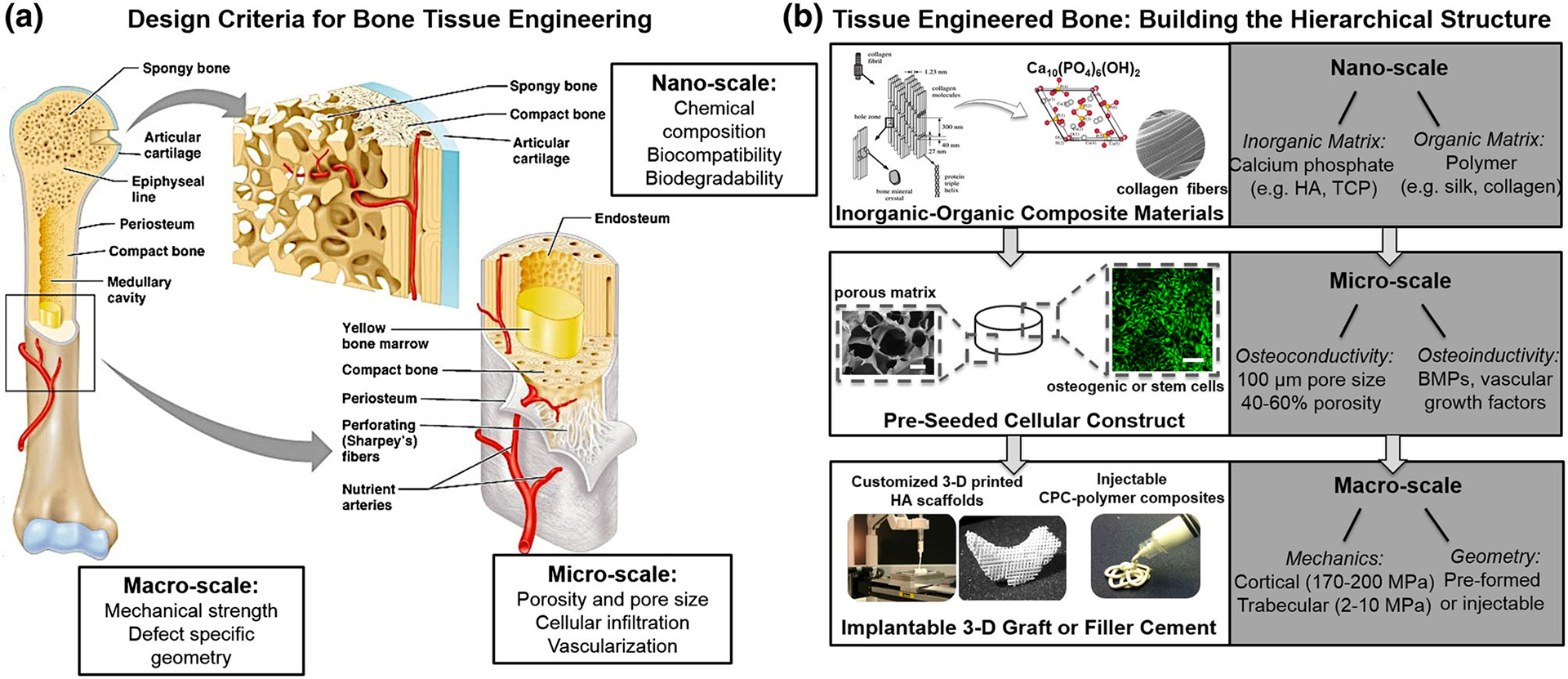FIGURE 1.

Bone tissue replacement. (a) Overview of the anatomical structure of human bone tissue and essential design criteria at the macro, micro, and nano-scales. (b) Building a functional bone graft or bone substitute material from a bottom-up approach involves careful selection of natural biocompatible and biodegradable materials to mimic the inorganic–organic structure of native bone. Calcium phosphates, such as hydroxyapatite (HA) and tricalcium phosphate (TCP), are frequently complexed with polymeric materials, such as collagen or silk, to form a composite structure. At a micro-scale, osteoconductivity of the composite scaffold is supported by porosity (40–60%) and pore size (>100 μm), and osteoinductivity to promote osteogenesis in vivo is accomplished by release of bone morphogenic proteins (BMPs) or vascular growth factors. On a macro-scale, scaffolds must withstand physiologic loading forces (2–10 MPa in trabecular bone and 170–200 MPa in cortical bone) and should be defect specific. This can be achieved with various methods including 3-D printing of patient-specific grafts or the use of an injectable, self-setting calcium phosphate cement (CPC)-polymeric fillers.
